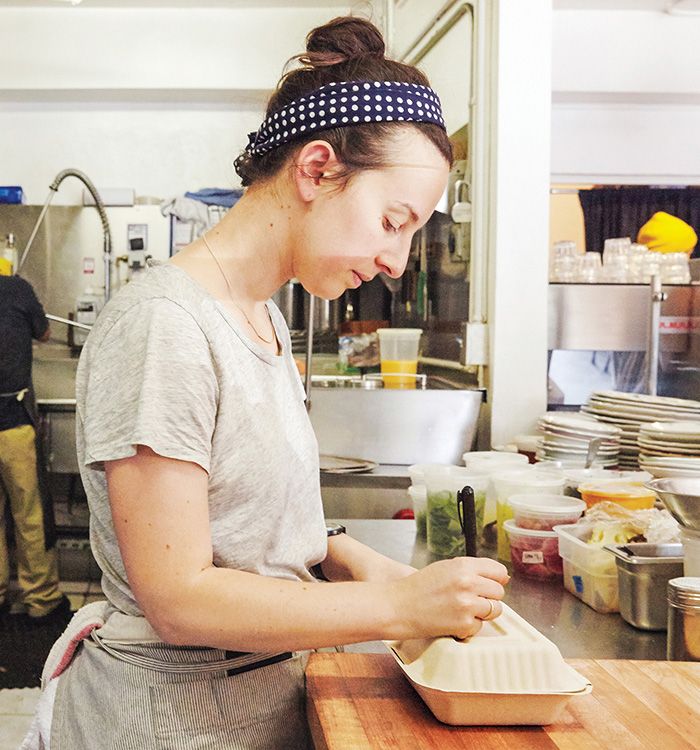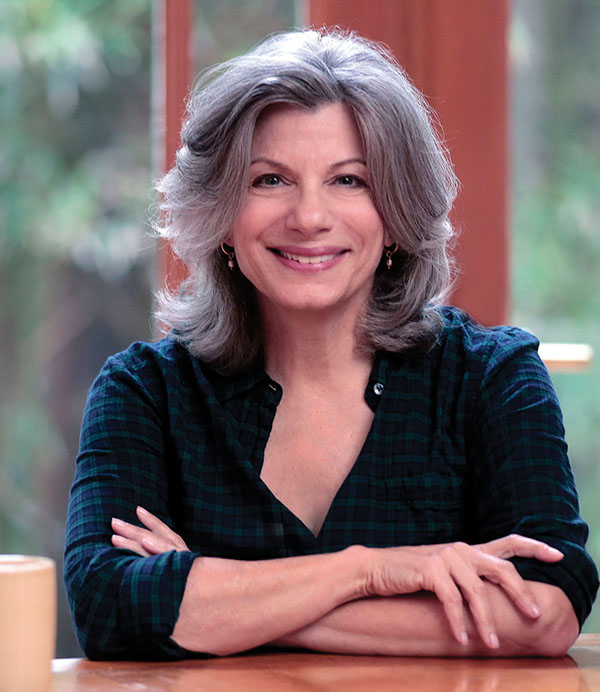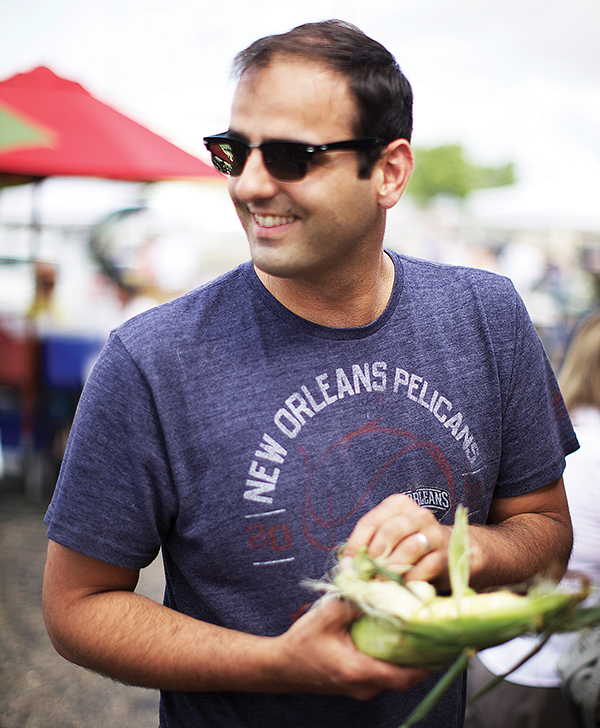Where the Vegetables are the Stars
In the hands of inventive chefs, homely vegetables go from simple sides to sophisticated centers of the plate.
by Jayne Cohen
It was a Cinderella moment: a humble cabbage—usually the stuff of slaws and boiled bubbe food—utterly transformed, caramelized with wood smoke and elegantly surrounded by a creamy muhammara of red peppers, pomegranate, tahini, and crunchy hazelnuts.
Yes, the chicken was outrageously good, and the just-baked pillows of fluffy pita thoroughly irresistible even to the staunchest carbophobe. But the March night I ate at the Israeli restaurant Shaya in New Orleans, winner of the 2016 James Beard award for Best New Restaurant in the U.S., I knew at first bite that, for me, that luscious cabbage was belle of this ball.
They’ve been dubbed vegetable whisperers, Shaya and other chefs known for taking even homely vegetables like Brussels sprouts, broccoli and butternut squash out of the wings and into the spotlight. Such foods are not always meatless: some chefs may cast a protein in a minor role. But even when lamb bacon embellishes a sizzling rotisserie-roasted celery root or a golden egg yolk sets off a shocking pink “beet tartare,” the vegetable stays the sexy star.
And it’s no secret that many of the finest of these chefs have Israeli roots or make use of techniques and ingredients – condiments like labneh, pomegranate molasses, tahini and date syrup; spices from Aleppo pepper to za’atar – popularized by Israelis. Even Paris and Vienna now boast outposts of Tel Aviv’s Miznon, the restaurant where Eyal Shani’s wood-roasted whole baby cauliflowers and blistered broccoli seduce vegetarians and meat-eaters alike. And in fact, Alon Shaya, the chef and co-owner of that eponymous restaurant in New Orleans, was channeling loving memories of his Bulgarian-Israeli grandmother’s stuffed cabbage when he created his roasted version.
“Israelis love their vegetables. They treat their vegetables the way Americans treat meat: marinating them, grilling them, roasting them low and slow,” Michael Solomonov tells me. Solomonov, who, with his business partner, Steven Cook, coauthored Zahav: A World of Israeli Cooking, the 2016 James Beard Book of the Year, should know. In Philadelphia at his celebrated Israeli restaurant, Zahav, he marinates steamed mushrooms with allspice before grilling them so that they taste like Israeli shishlik. And his all-time favorite eggplant preparation calls for frying the eggplant until dark chocolate brown, but still creamy within, and then frying it once more with vinegar, onions, and peppers until it turns, he writes, “sweet, sour, and smoky.”
Shaya explains that Israelis, who came from “many cultures that were poor and that hadn’t always had access to fresh seafood and meat,” made use of the abundant vegetables available to them. They found creative “ways to feed their families with food they could grow at low-cost and with high yields, like cabbage and eggplant.” While it’s been a process evolving “for years and generations,” today, he notes, “the complexity of the vegetable dishes Israelis cook shows that vegetable cooking is more than just steamed broccoli or peas and carrots.”
Creating that complexity, it turns out, is the difference between a simple side dish and a sophisticated center of the plate. Reimagine that plain broccoli as Amanda Cohen, chef-owner of Dirt Candy on Manhattan’s Lower East Side, does: grilled and smoked, her broccoli morphs into “broccoli dogs” served with broccoli kraut and mustard barbecue sauce. She recasts common carrots into tony carrot sliders: soft, carrot-inflected sesame buns enveloping slow-roasted carrot confit, pickles, onions, and hoisin sauce, with crispy yuba (tofu skin) added for texture.
I ask Cohen, whose popular restaurant relaunched last year in larger digs, why building all those layers of flavor and textures is so important. “Vegetables are very uni-textured,” she says. “Think of a steak. The meat has so many flavors and textures: the sear and char, tender, juicy center, spicy crust. So you don’t need to add different points of flavor.”
But, as she makes clear in Dirt Candy, her cookbook written in graphic novel form, “For vegetables, you need to go big or go home”: don’t be timid about ramping up the flavor and find ways to incorporate a variety of textures.
So forget simple steaming, poaching, and boiling. Veg-centric chefs are coaxing out more flavor with brasher methods: charring and smoking, brining and blasting, slow-roasting and sous-vide cooking, even dehydrating or deep-frying the vegetable peels.
“A lot of chefs use the great trick of highlighting an ingredient by using it in two different ways within the same dish,” Jessica Koslow writes in Everything I Want to Eat Now: Sqirl and the New California Cooking, the new cookbook that grew out of her wildly successful produce-driven restaurant, Sqirl, in Silver Lake, Los Angeles, where she serves breakfast and lunch only. “If you’re making a beet salad, you could emulsify some of the beets and use them in the dressing.” Or, she tells me, “you could add the beet roasting juices to the dressing.”
To make a dish that sings in different notes of zucchini, Michael Solomonov roasts trimmed zucchini slices and tosses them with dressing. Instead of discarding the trimmed zucchini ends, he roasts them until nearly blackened, then purées them with tahini, anchovies, and lemon. To serve, he pools that umami-rich purée on a platter, and drapes it with the roasted zucchini slices, feta, and hazelnuts.
Using vegetables this way multiplies flavors and textures, adds dimension, and creates a dish greater than the sum of its parts, Koslow points out. “That balancing act of acid, of salt, of heft, really gets people interested and keeps them going” without palate-fatigue setting in.
The holidays of Rosh Hashanah, traditionally the anniversary of Creation, and Sukkot, the biggest of the seasonal harvest festivals, make this a time of year when we are conscious of our role as stewards of the natural world. Our “vegetable whisperer” chefs are keenly aware that real appreciation and gratitude for the earth’s bounty begin by not wasting it. They honor the earth by practicing root-to-stem cooking.
Vegetable-driven cuisine, of course, starts with fresh, seasonal vegetables. Shaya finds inspiration in the “great Louisiana farms producing all year round some of the best vegetables you can get.” The seeds for Sqirl began with the leftovers Koslow tinkered with from the Hollywood Farmers’ Market. “I fell in love with the beauty and diversity of California produce,” she writes.
And early in 2017, in a still-to-be named restaurant in West Los Angeles, Koslow will blend that love for fresh produce with another area she is passionate about: Jewish Diaspora flavors. There she will combine Ashkenazi and Sephardi cuisines “in a way where they aren’t separate but merge... a conversation of differences,” as she explains it to me, where handfuls of her market-fresh Middle Eastern herbs, like Moroccan mint, might “brighten and bring enormous flavor to dishes from our past, such as carrot and prune tzimmes.”
For Amelia Saltsman, the Southern California farmers’ markets – especially in Santa Monica, where she lives – serve as wellsprings for her culinary story. “Although I’m an omnivore, the produce is the most exciting component for me because that’s where you’ll find the greatest diversity and variety. And all those colors! How many kinds of meat are there and how different can one piece of meat be from another?” she asks.
Take cauliflower, a darling of the vegetable-forward movement, which, Saltsman writes in The Seasonal Jewish Kitchen: A Fresh Take on Tradition, “lends itself to multiple Jewish Diaspora profiles.” To illustrate, she offers two distinct versions that begin with a brief bath in boiling salted water (and she explains why this is the secret to luscious roasted cauliflower). Then she roasts one with ghee, a curry blend, and raisins for a taste of Jewish India. The other, she sears with hawaij, a Yemenite spice blend, and tops with tahini and sea salt, giving it an unmistakably Israeli passport.
Amanda Cohen – who calls Dirt Candy “an all-vegetable restaurant” because the focus is on delicious vegetables, not simply vegetarian cooking – agrees. “I realized early on how much more you could do with vegetables than a piece of protein. It opened up my world as a chef. And they’re a lot more fun. I try to make eating vegetables a joy.” And in her sly, playful riffs – like creating “fried calamari” by stamping rings out of mushrooms – she is trying, she says, “to recreate that same joy we had at table eating big Jewish family holiday meals” growing up in Toronto.
Joy is palpable in the riot of colors and flavors that vegetables bring to our fall holiday table. As Rosh Hashanah approaches, I’m concentrating on which of them I’ll be serving as part of the festive New Year table rituals when eating symbolic foods becomes an edible prayer:
Michael Solomonov’s beets with tahini convey a food pun imploring that we “beat back those who would do us harm,” their sweetness signifying we should know no sadness; the deep gold of Amanda Cohen’s Grilled Carrot Paella is evocative of coins, and therefore of good fortune; Jessica Koslow’s savory pancakes are made with squash, one of the vegetables that grow in profusion at this time of year, suggesting a fruitfulness that translates into hopes for a year filled with an abundance of joy and prosperity.
There may be brisket on the table, but these vegetables are taking center stage. After all, they will be embodying our very best wishes for the New Year.
The Takeaway: Try These Chef-Tested Techniques
Amanda Cohen
“If you're roasting, leave it in longer than you think you should so that the vegetables release their sugars and caramelize completely.” That will create different textures and bring out both sweetness and savoriness. (from Dirt Candy)
“Standard stocks really add nothing,” Cohen says. Instead, she makes quick stocks based on whatever vegetable is highlighted in the dish. Her carrot stock, made simply of carrots and aromatics (onion, garlic, and celery) is simmered for just 30 minutes; her carrot risotto cooked in that stock along with a little added fresh carrot juice brims with deep, richly satisfying carrot flavors.
Jessica Koslow
”I'm a big fan of schmears,” Koslow says. “That comes from being a bagel-and-lox kind of gal and seeing that there should be a base before the protein. It doesn't have to be cream cheese or labneh or puréed legumes [like hummus]. It could be puréed beets with poppy seeds folded in or a cauliflower ganoush.” Her recipe, “Tomato Party,” begins with a tomato schmear base and continues with cherry tomatoes, whipped feta and garlic chips. And it follows the Sqirl formula for flexible eating: component building blocks such as dairy, fish, meat, etc. can be switched out or added in, so the dish will suit any dietary restrictions.
For a quick alternative to her homemade toasted rice or quinoa, Koslow suggests in her new book, Everything I Want to Eat Now, using Indian puffed rice cereal to add a layer of crunch to a vegetable-focused dish.
Amelia Saltsman
Saltsman emphasizes that cooking with a lot of liquid dilutes the flavor of vegetables. Traditionally, prepared stuffed vegetables are filled “and then baked or simmered on top of the stove in a lot of sauce,” she notes. “Instead, to intensify the flavor, I love to first roast the vegetables to caramelize the natural sugars, concentrate the juices, and evaporate a lot of the liquid. Then, I stuff them and roast in the oven. It all takes less time than a long simmering in sauce, so the result is vibrant and bright, rather than a stewed taste and texture.”
“To develop deep layers of flavor in vegetables cooked on top of the stove, don't just throw raw vegetables in water and expect a miracle. Start with a good sauté, and get it really going before you add any liquid. Then add only half of the liquid called for, and let it merge and coalesce before slowly adding more liquid as needed.”
Michael Solomonov
Solomonov is partial to slow-roasted sweet potatoes for the fall. But, he says, “that method of oven on low and simply roasting on a sheet pan for an extra-long time really applies to any root vegetable...It's the marriage of a few key ingredients: a little bit of Shabbat, a little bit of schmaltz.” And perhaps sprinkle on a touch of turmeric: In Zahav, he writes, “To me, it makes root vegetables taste more like themselves.”
Alon Shaya
“Keep vegetables as whole as possible, and they will make a big impression on your guests.” At Domenica, one of the three restaurants in New Orleans where he is executive chef and partner, Shaya's signature cauliflower is presented as a whole roasted head, with a steak knife rakishly plunged into its sizzling crown.
”All vegetables are created equally and have the same potential to impress when treated right. Get out of your comfort zone and cook vegetables using different techniques than you have been and I promise you will be hooked.”
















